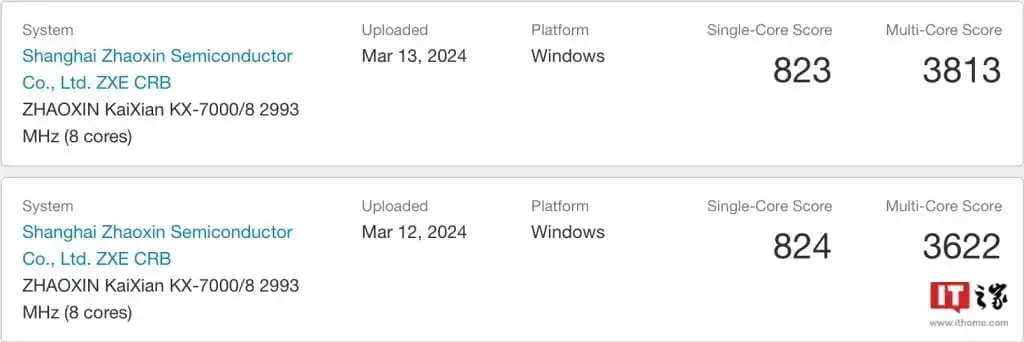While China stands as a prominent figure in global tech manufacturing, its progress in domestic processor development trails behind certain competitors, notably the United States. Nevertheless, China is actively working to bridge this gap, as evidenced by recent advancements like Zhaoxin's 8-core Kaixian KX-7000 processor. Below are the specifics of this development.
Zhaoxin KX-7000: Enhancing Chinese Processor Performance
Eight years have passed since Zhaoxin, a company dedicated to creating domestic X86 processors, launched its initial product, the ZX-C+. Rather than resting on its past achievements, the company has persistently pursued innovation, a commitment that seems to have paid off with the introduction of the Zhaoxin KX-7000 processor. This homegrown processor, which has recently surfaced on Geekbench, showcases a significant performance boost compared to its predecessor, the KX-U6780A.
Benchmark Results and Specifications
In the Geekbench 6 evaluation, the Zhaoxin Kaixian KX-7000 demonstrated commendable performance figures, scoring 824 in single-core and 3813 in multi-core performance. The processor, designed with 8 cores, operates on the KX700M motherboard, boasting a base frequency of 2.99GHz, 4MB of L2 cache, and 32MB of L3 cache. During the test conducted on Windows 11 Pro in balanced power mode, the processor reached a peak operating frequency of 3293MHz.
While the initial scores of the KX-7000 may draw comparisons to an 8th-generation i5, signaling potential underperformance, it's crucial to note the historical context. Intel initiated its processor journey back in 1971, contrasting Zhaoxin's inception in 2013. This seven-year discrepancy emphasizes the significant strides made by Zhaoxin in a relatively short span.
Advancements in Performance and Design
Geekbench 6 assessments on the Linux system illustrate that the preceding KX-U6780A processor achieved a single-core score of 344 and a multi-core score of 1873. In contrast, the new KX-7000 exhibits 2.4 times the single-core performance and double the multi-core performance. Zhaoxin attributes this improvement to the "Century Avenue" microarchitecture and enhanced Chiplet design of the KX-7000, which also features upgraded graphics capabilities and advanced I/O interfaces such as DDR5, PCIe 4.0, and USB4. Despite these advancements, Zhaoxin acknowledges the journey ahead in further refining their processor technology.


Leave a Reply